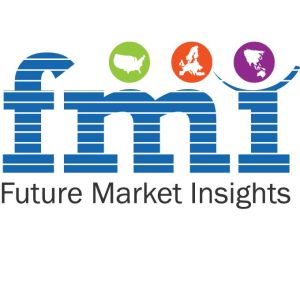Mackerel Market to Witness Robust Expansion Throughout the Forecast Period 2028Posted by vakhas on August 24th, 2018 Europe: An Achilles’ in an Otherwise Steadily Growth Mackerel Market The mackerel market is witnessing a significant impact from the frequent changes in the total allowable catches and fishing quotas for mackerel across the world. In the year 2017, the Fisheries and Oceans Canada (DFO) increased the total allowable catch (TAC) for mackerel by 25% as compared to that in the year 2016. The DFO announced the fishing quota for mackerel in the Northwest Atlantic Fisheries Organization (NAFO) subareas 3 and 4, which increased from 8,000 tons to 10,000 tons in 2017. Also, the Peruvian production ministry (Produce) increased the TACs for mackerel from 100,000 tons to 110,000 tons till the end of 2018, which may support the growth of the mackerel market in the near future. Another factor that triggers growth of the mackerel market is the whopping rise in fishing quota for mackerel announce by the Australian government. On assessing the stocks of jack mackerel in Small Pelagic Fishery (SPF), the annual TACs for commercial fishers was increased by the Australian Fisheries Management Authority (AFMA). AFMA increased the fishing quota for jack mackerel from 920 tons to 4,190 tons for the season 2018-19, which marks a radical move in the mackerel market. Taking into account the latest scientific research and consulting with industry experts, the AFMA commission also approved new methods of fishing, which are conditional on all the commercial fishers that meet additional requirements by the AFMA. Though there are little changes in the TACs for blue mackerel, the huge rise in TACs for jack mackerel by the AFMA is likely to have a positive impact on the growth of the mackerel market. However, the European Union (EU) has taken a decision to cut the TACs for mackerel in the Atlantic, North Sea, and the Black Sea by over 20% in 2018, which may impact fishing opportunities in the mackerel market in the near future. In addition, the International Council for the Exploration of the Seas (ICES) has proposed to reduce the fishing quota for mackerel in the Northeast Atlantic by 35% in 2018. Also, the fishing quota for mackerel for Irish fishermen had reduced from 86,429 tons in 2017 to 69,143 tons in 2018, which may impact the ultimate growth of the mackerel market in the upcoming years. Rising concerns about the critical status of mackerel in the Atlantic is resulting in a massive drop in the fishing quota for mackerel in various countries. Nevertheless, a significant rise in TACs for mackerel in Australia and Canada may show some positive signs of growth for the mackerel market in the foreseeable future. Buyers Shifting to Pacific Mackerel due to the High Price of Atlantic Mackerel The mackerel market is undergoing some radical changes, as the high prices of Atlantic mackerel are increasing the possibility of Pacific mackerel replacing it in some African markets. Though Nigerian import quotas remain strict in the year 2018, Nigeria remains an interesting market for mackerel. Owing to the shortfall of hard currency and low crude prices, Nigerian buyers are exploring cheaper alternatives for the expensive Atlantic mackerel. As the fishing quota for mackerel in many European mackerel markets is dropping each year, the prices of European mackerel are increasing drastically. In 2016, the prices of the average Norwegian whole frozen mackerel increased up to US,500 per ton, which is leading to the declining exports to African countries. On the other hand, the normalization of diplomatic relations between China and Norway is making a positive impact on the seafood industry as well as on the mackerel market. The Food and Agriculture Organization of the United Nations (FAO) states that the Norwegian exports of frozen mackerel to China increased from 8,400 tons in 2016 to 193,000 tons in 2017. China is known for processing and re-exporting mackerel that it imports, and it is still less expensive than Atlantic mackerel, which marks the rising demand for Pacific mackerel in the mackerel market. Request For Brochure @ https://www.factmr.com/connectus/sample?flag=B&rep_id=834 The picture is likely to remain the same during the next few years, as the fishing quota for mackerel further drops in the European markets, defining important growth prospects of the mackerel market. This analytical research study imparts an all-inclusive assessment on the market, while propounding historical intelligence, actionable insights, and industry-validated & statistically-upheld market forecast. Verified and suitable set of assumptions and methodology has been leveraged for developing this comprehensive study. Information and analysis on key market segments incorporated in the report has been delivered in weighted chapters. A thorough analysis has been offered by the report on
Regional Segments Analyzed Include
Compilation of authentic and first-hand intelligence, insights offered in the report are based on quantitative and qualitative assessment by leading industry experts, and inputs from opinion leaders & industry participants around the value chain. Growth determinants, macroeconomic indicators, and parent market trends have been scrutinized and delivered, coupled with the market attractiveness for each market segment encompassed. Qualitative impact of growth influencers on the market segments across regions has also been mapped by the report. Highlights from the Report
Like it? Share it!More by this author |


